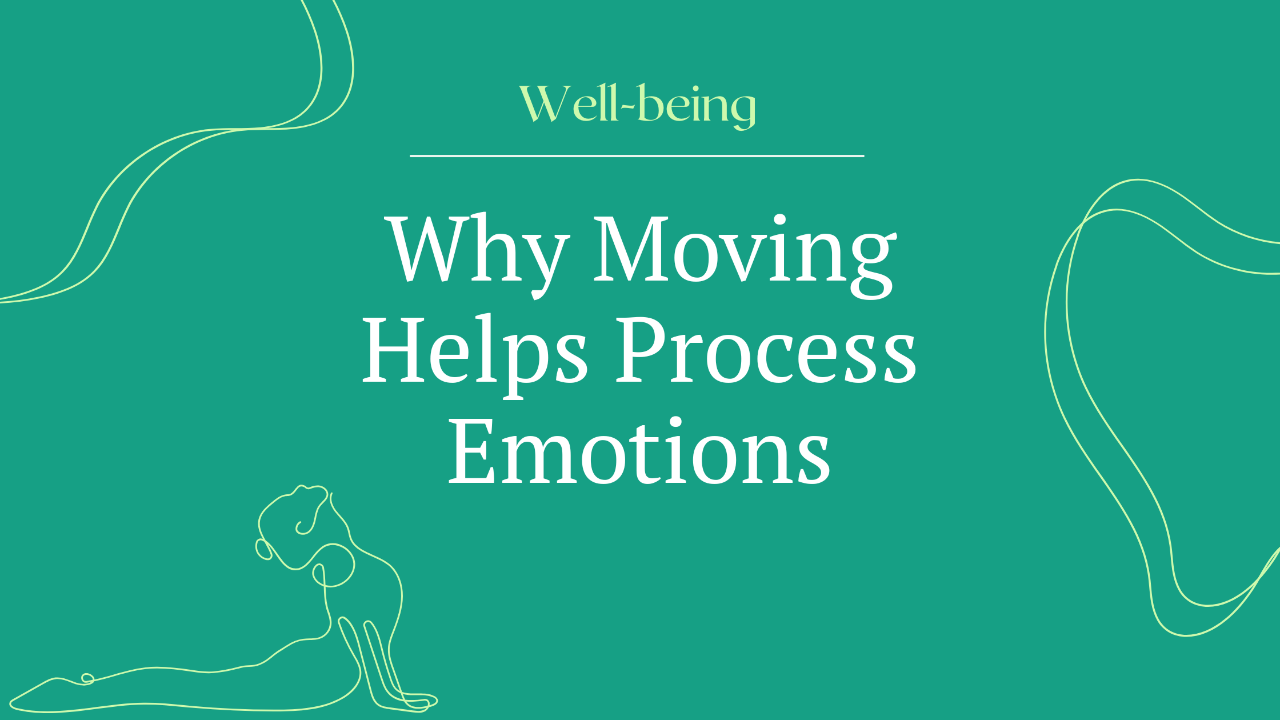✨ Why Movement is the Fastest Way to Process Your Emotions
Oct 20, 2025
Most people try to think their way through emotions.
They sit in it. Try to figure it out. Talk themselves in circles.
But emotions aren’t ideas. They’re physical.
They live in your body.
And the fastest way to move through them is to move.
Your body holds your emotions
You may already know this.
When you’re anxious, your chest tightens.
When you’re angry, your jaw locks.
When you’re sad, your shoulders sink and your energy drops.
We’ve been taught to sit still and process everything in our heads.
But your body holds on.
Stress lives in your fascia.
Grief sits in your lungs.
Anger builds in your liver.
And unprocessed emotion often shows up as chronic tension, digestive issues, fatigue, or brain fog.
What helps more than thinking? Movement.
Not rigid workouts.
Not pushing yourself through a gym routine.
But the kind of movement that helps your body feel safe, open, and clear again.
What Type of Movement Works Best? It Depends on What You Feel.
Each emotion needs something different.
Here’s a breakdown of what to choose, based on what’s going on internally.
If You Feel:
- Sadness or Grief
Sadness pulls your energy down.
You might feel tired, withdrawn, or heavy.
Choose:
- Walking in nature – especially barefoot. Gentle rhythm. No pressure. Helps you come back to your body.
- Slow flow yoga – simple stretching and breath. No goals. Just presence.
- Swaying or dancing – open your chest, feel into the music, and let your body move how it wants to.
- Swimming or floating – water is naturally calming, cleansing, and emotionally supportive.
Eastern Insight:
In Traditional Chinese Medicine, grief is stored in the lungs. Deep breathing, Qi Gong, and any movement that opens the chest support emotional release.
Scientific Research:
Studies show that walking outdoors boosts serotonin and dopamine, two chemicals often depleted during sadness and depression.
If You Feel:
- Anxiety or Overstimulation
Anxiety builds up in the chest, stomach, and neck.
It’s often a sign there’s too much mental activity and not enough physical release.
Choose:
- Running or long walks – steady movement helps regulate breath and reset your nervous system.
- Cycling – can create a meditative rhythm, especially outdoors.
- Strength training or Pilates – the focus and structure help calm racing thoughts.
- Martial arts or rock climbing – force your attention into the present moment.
Eastern Insight:
In Ayurveda, anxiety is linked to excess Vata (air + space). Grounding movements like weighted exercises, slow walking, and Tai Chi help stabilize it.
Scientific Research:
Exercise increases GABA, a neurotransmitter that slows down neural activity. It’s one of the fastest ways to calm an overactive mind.
If You Feel:
- Anger or Irritability
Anger is a buildup of heat.
If you don’t move it, it either explodes or turns inward.
Choose:
- Boxing or kickboxing – a clear outlet for frustration.
- HIIT or circuit training – fast effort, short bursts, full release.
- Sprinting – a quick way to burn off adrenaline.
- Chopping wood or using a sledgehammer – primal, direct, and strangely satisfying.
Eastern Insight:
In TCM, anger is held in the liver. Liver Qi stagnation causes frustration, tension, and even digestive issues.
Twisting movements, breathwork, and anything that builds heat through sweat can help clear it.
Scientific Research:
High-intensity workouts reduce cortisol and adrenaline, the stress hormones behind many physical symptoms of anger.
What to Ask Yourself Each Day
Instead of forcing a workout, start by asking:
- “What am I feeling right now?”
- “Where do I feel it in my body?”
- “What movement would help this move through?”
You don’t need to be consistent.
You need to be honest.
Some days you need a long run.
Other days it’s a stretch on the floor.
Sometimes, all you can do is put on music and sway. That counts.
How to Integrate This Into Your Routine
Here’s a simple reset ritual you can use daily:
- Notice the emotion: Name it clearly. Sad. Anxious. Angry.
- Locate it in the body: Chest? Jaw? Gut?
- Match it with movement: Use the guide above.
- Move for 5–15 minutes: No pressure. No performance. Just move.
- Close with stillness: Sit, breathe, or rest for a moment. Let your body integrate.
Final Thought: If You’re Stuck, Don’t Think—Move.
Thinking has its place.
But when emotions get stuck, your body is the key.
You don’t need a plan. You don’t need a perfect routine.
You just need to move.
One stretch. One breath. One walk.
Start there.
And let your body do what your mind can’t.
Welcome to Ambition Redesigned! Where purpose meets progress.
Get one actionable tip delivered to your inbox every Monday.


